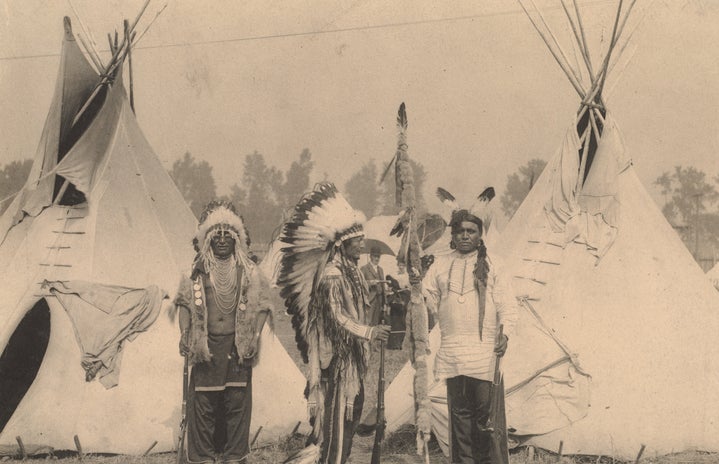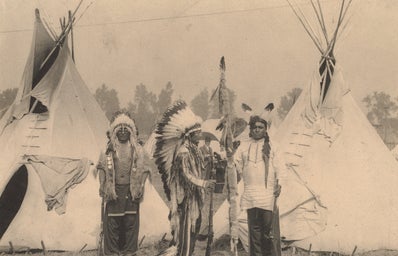November is National Native American Heritage Month, also referred to as American Indian and Alaska Native Heritage Month.
It’s a time to honor the rich and diverse cultures, traditions, and narratives of Indigenous peoples while recognizing the many sacrifices, contributions, and achievements of Native Americans throughout history and the present. Moreover, it’s a chance to raise awareness and advocate for solutions to the various challenges that Native people have endured and still face today.
To learn more about the significance of Native American populations, here are ten essential facts to know:
1. American Indian Day Emerged in the 1900s.
The first American Indian Day was held in New York in May 1916 thanks to the efforts of two prominent Native Americans. Red Fox James, a member of the Blackfeet Nation, rode horseback across the country in 1916 advocating for state governments to establish a day to value American Indians, and Dr. Arthur C. Parker, a Seneca Indian, persuaded the Boy Scouts of America to acknowledge a day for the “First Americans” in 1915.
2. Native American Heritage Month Evolved from a Week to a Full Month.
In 1990, President George H.W. Bush expanded the previously initiated “American Indian Week” to “National American Indian Heritage Month”, designating November as the month of appreciation. Later, President Barack Obama changed the title to National Native American Heritage Month.
3. Congress Enacted the Indian Citizenship Act in 1924.
While the bill granted Native Americans citizenship, many states still prevented them from voting. It wasn’t until 40 years later that all 50 states granted Indigenous peoples the right to vote.
4. Indigenous People’s Day also Commemorates Native Heritage.
President Joe Biden became the first to declare Indigenous People’s a national holiday held annually on October 11th. Many view this as a counter to Columbus Day, which has become a controversial holiday as more people become aware of the true history of Christopher Columbus. Columbus didn’t “discover” the Americas; he stole them, subjugated, and killed the already 50 million Indigenous peoples living there. We owe our land and prosperity to the millions of lives enslaved and lost due to European colonialization, imperialism, and westward expansion.
5. The Indian Removal Act Forcibly Displaced Native People in the 1800s.
Signed by President Andrew Jackson in 1830, the Indian Removal Act enabled the federal government to seize Native territory east of the Mississippi and forcibly relocate Indigenous peoples from their homes in present-day Alabama, Georgia, Florida, North Carolina, and Tennessee to “Indian territory” (present-day Oklahoma). This resulted in The Trail of Tears – a term used to describe the involuntary and brutal process of dislocating approximately 100,000 Native people between 1830-1850, of which nearly 4,000 died of disease and exposure.
6. Native Populations Continue to Increase.
According to the U.S. Census, Native people accounted for 9.1 million people in 2020 compared to 5.2 million in 2010. They now comprise 2.9% of the U.S. population and are projected to increase to 10.1 million by 2060.
7. The U.S. is Composed of multiple Tribal Lands.
In 2021, there are approximately 326 distinct federally recognized Native American land reservations, spanning more than 56 million acres. Currently, there are 574 different federally recognized Indigenous tribes in Alaska and 35 other states. Like state governments, Native American tribes operate through tribal sovereignty, indicating that tribes have a right to govern themselves.
8. Native Americans Speak a Variety of Unique Languages.
Initially, there were over 300 indigenous languages spoken in the United States. Now, there are only approximately 175, with Navajo being the most popular.
9. The Largest Tribal Grouping is Cherokee.
Cherokee constitute the largest Native American tribal grouping, with Navajo and Latin American Indian tribes following as second and third, respectively. The three largest Alaskan Native tribes are Yup’ik, Inupiat, and Tlingit-Haida.
10. Navajo People were Crucial During WWII.
During WWII, the Navajo served as code talkers and used the Navajo language to transmit covert information to allied forces. However, this instrumental impact remained classified until the Code Talkers Recognition Act of 2002, which praised the brave and monumental efforts of Native Americans during the World Wars.
In addition to learning about Native American heritage, here are several meaningful ways to honor Indigenous peoples:
- Visit a reservation or museum
- Read works by Native American authors
- Watch films starring Indigenous peoples or discussing Indigenous struggles and accomplishments
- Support native-owned businesses, charities, and organizations like NDN Collective, Honor the Earth, and Illuminative
- Attend or host an educational event
- Learn about the history and truth behind America’s formation (i.e. the real “First Thanksgiving”)
- Respect Native belief systems as you would any other religion
- Support the fight to change race-based mascots and sports teams
- Follow and support Native voices on social media


